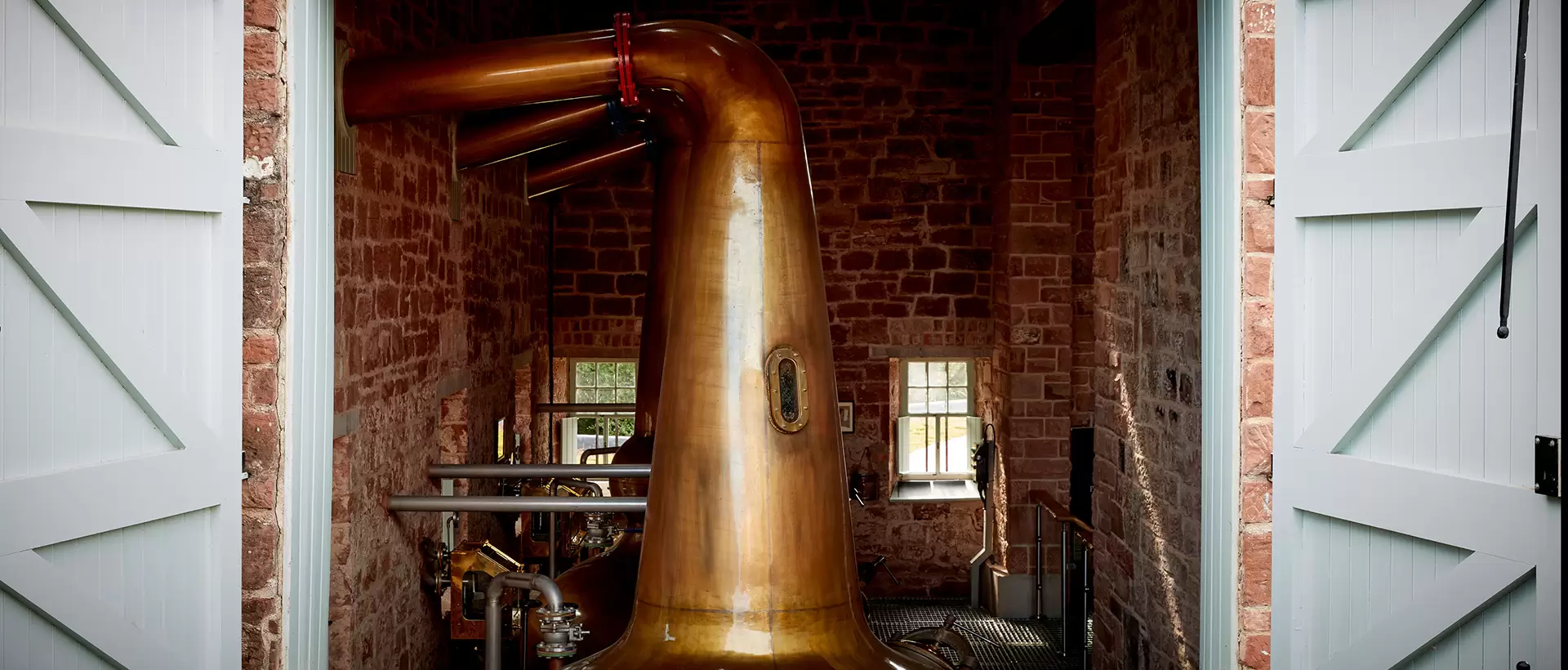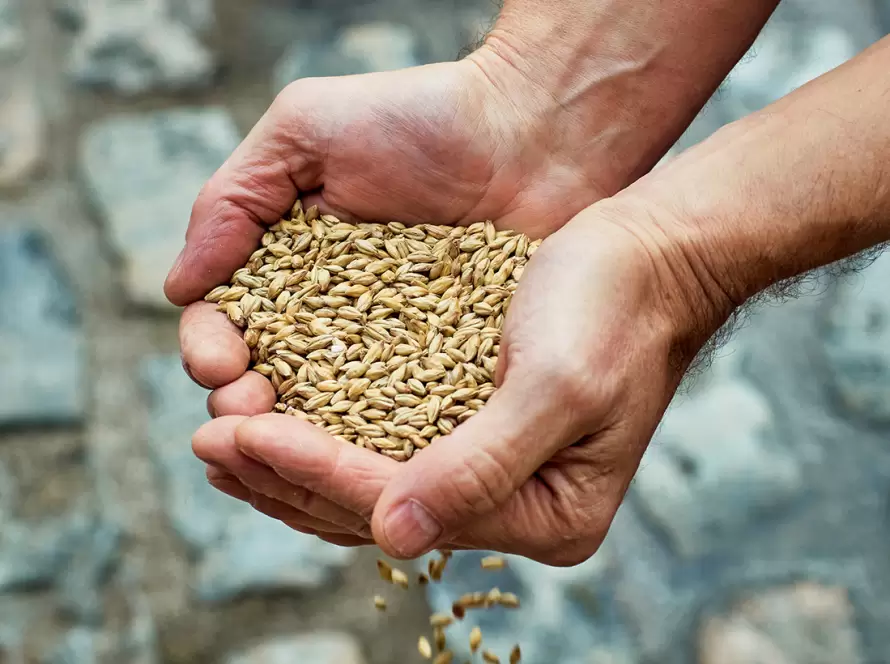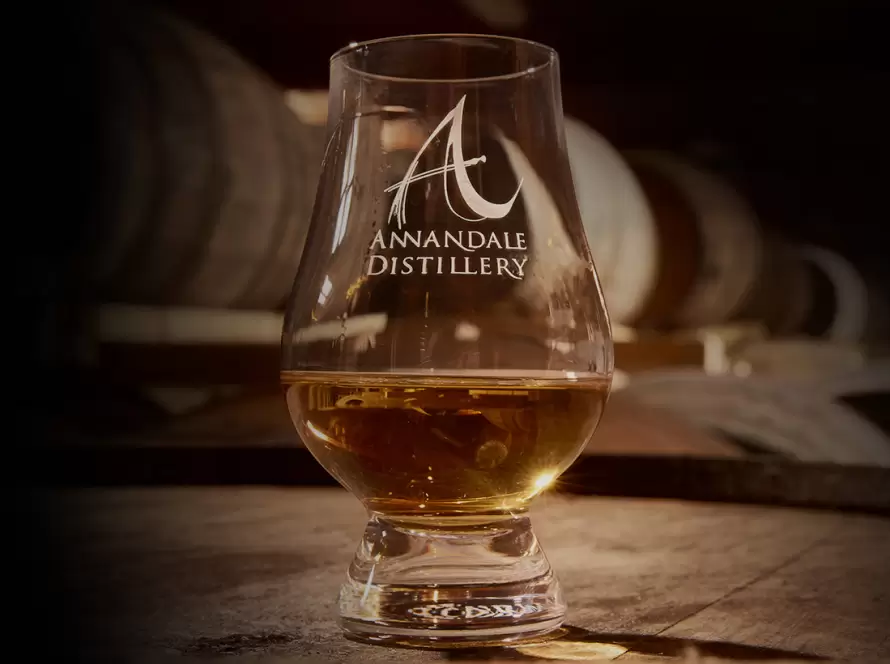It’s effect on Single Malt Scotch Whisky flavour
Copper pot stills are the iconic distillation vessels found in all Single Malt Scotch Whisky distilleries. The choice of copper as a construction material for the stills and condensers was initially governed by its malleability, which makes it relatively easy to form into the complex shapes, and by its ability to conduct heat efficiently. The fact that it happens to play an important role in spirit quality is a happy coincidence. This positive effect on flavour is attributed to the ability of copper to reduce the level of sulphur containing compounds in the distillate and to the act as a catalyst in the formation of esters (flavour compounds that contribute positively to the flavour of Scotch whisky). Surprisingly, given the importance of copper, details of how it influences whisky flavour are not fully understood. However enough is known for distillers to appreciate the importance of copper during distillation, in terms of determining and refining spirit flavour and also in terms of the consistency of spirit quality.
Sulphur containing compounds, at high levels, are generally considered to give the spirit unpleasant, undesirable odours often described as vegetable, rotten egg, grassy, rubbery or struck matches. Importantly not all sulphur compounds are undesirable; at lower levels they can make a positive contribution to the complexity of the whisky improving the feintyness*, and meaty aromas. (*’Feints’ is the name given to the third fraction of distillate produced in the spirit still. It has a characteristic smell and flavour {‘feintyness’} which can be desirable, but only in very small amounts. Excessive feintyness is very unpleaant.)
The most common sulphur based compounds in whisky are dimethyl sulphide (DMS), dimethyl disulphide (DMDS) and dimethyl trisulphide (DMTS), although there are others. All three of these sulphur compounds have an undesirable odour. They are formed when methanethiol reacts with hydrogen sulphide. These compounds derive from the amino acids methionine and cysteine, respectively, which ultimately derive from the yeast and barley used in fermentation.
Copper is involved in both increasing and decreasing the levels of sulphur compounds, although it is the latter that’s most important. Copper salts, which are produced by corrosion of copper on the inside surfaces of the stills, promotes the formation of DMTS from methionine. Conversely, native (i.e. uncorroded) copper lowers the concentration of DTMS. Perhaps the simplest way in which copper removes undesirable sulphur compounds is by absorbing them onto the inner surfaces of the stills and condensers during distillation and subsequently releasing them when exposed to air as the distillation equipment is emptied at the end of the process. Of greater significance, sulphur compounds are also reduced via chemical reactions that transform them into less flavoursome substances or by forming complexes with copper which don’t ultimately distil over into the new make spirit.
The role of copper in the formation of esters is not well understood. The majority of esters in Scotch whisky are produced by yeast during fermentation. They are formed when alcohol (principally ethanol in this case) reacts with carboxylic acids (principally fatty acids but also acetic acid) and impart flowery and fruit flavours to the whisky. Copper is a catalyst for ester formation which occurs when the reactants meet native copper on the inner surfaces of the stills and condensers. It is well known that after cleaning the inside of copper stills and condensers, undesirable flavour changes may occur until a patina has built up on the copper surface which changes the properties of the copper as a catalyst.
It is important to recognise that while copper plays a crucial role in influencing the quality of new make spirit, flavour reactions can only occur when the liquid is in contact with the copper. Thus, it is important during the short period of copper exposure to maximise the desired effects of reducing sulphur containing compounds and esterification. This is achieved via process management techniques and by optimising various distillery design features. Process management parameters include distillation time, reflux rates (the average number re-condensation – re-volatilisation cycles achieved before the spirit leaves the still), boil rates, cut points and condenser temperatures, all of which control the amount of time the liquid remains in contact with copper. These parameters are used to optimise new make spirit flavour and thereafter, by adhering to the optimised recipe and process conditions, ensuring production of a consistent spirit with the desired favour profile.
Distillery design, particularly the design of the copper stills and the copper innards of the condensers, is fundamental to spirit quality (as described above). Once built, making changes is prohibitively expensive so, from the moment of conception, it’s important to design the stills and the condensers to produce the desired style of spirit. Equipment designed to give enhanced contact with copper tends to produce lighter, fruitier spirit. Lesser contact with copper yields spirit which is heavier and meatier in character. Tall stills with long lyne arms (the wide pipe that connects the top of the still to the condenser) and tube and shell condensers, all will give lighter, less sulphury and fruity spirits. In contrast, short stills with traditional worm tub condensers which give more complex spirits with a heavier, meatier character. Using twin spirit stills to distil the same volume of spirit (as with Annandale Distillery) produces increased copper contact because the surface area to volume ratio reduces as still size increases. Consequently, two smaller stills will give greater copper contact versus one big still with the same combined volume.
The location of copper in the distillation apparatus is also important for reducing sulphur compounds. Interestingly, there are opposite effects in the wash still and spirit still. With the wash still, the copper pot is least effective in reducing sulphur compounds whilst the copper innards of the condenser have a much greater influence. The opposite happens in the spirit still, where the pot has the greatest influence and the condenser has the least. Consequently, the most effective sections of the copper distillation apparatus are the wash still condenser and the spirit still pot. It is noteworthy that these tend to be areas of higher copper corrosion, possibly due to a relatively acidic environment. Higher acidification also facilitates greater removal of sulphur compounds. It may be that the environment in these sections of the distillation apparatus makes them relatively susceptible to acid corrosion which in turn improves their ability to remove sulphur compounds. Once again having more but smaller stills (as with Annandale) will improve these processes by effectively increasing the surface area to volume ratio. It’s noteworthy that distilleries renowned for their light fruity spirit (e.g. Glenfiddich) have chosen to increase the number of stills rather than the size of the individual stills, when increasing production capacity.






